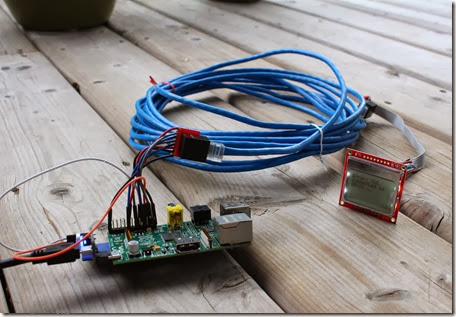Well, not quite, maybe. Let me explain. In previous posts, I played around getting the Nokia 5110 LCD to properly work with the Raspberry Pi. After the usual set of problems, it fully cooperated and I incorporated it as my display in my carputer.
Now, I would like to mount the display on the dash of my car somewhere, but, although the Pi is small, it is still too big to fit in properly.
So I got to thinking, what if I place the display at some distance from the Pi? But how? I decided to go out on a limb and use RJ45 connectors and jacks.
I bought some RJ45 jacks via Ebay and some RJ45 breakout boards from Cooking Hacks. These breakout boards, at a whopping $0.50 a board, allow for easy hookups of the RJ 45 jack to the wires that lead either from the Pi’s GPIO pins or go to the input pins on the Nokia LCD.
After soldering the jacks and the wires to the breakout boards, it was time to grab an Ethernet cable (6 feet in this case), slip the ends into the jacks and turn on the Pi. At first, the results were ambiguous. Sometimes, the display showed correct results, sometimes there were errors in the text, sometimes nothing. So I decided to do some experimenting.
I noticed that the speed at which the Nokia LCD was processing data was set at 5Mhz. I reduced this to .5 Mhz. Voila, it worked.
Next, I tried a longer cable, 24 feet. No problem! I don’t have a longer cable, it would be interesting to see what would happen.
Here’s the 24 foot cable in action (the error message on the display has nothing to do with this project).
So, if you need a display a long way away from the Pi itself, may be this is the way to go…

